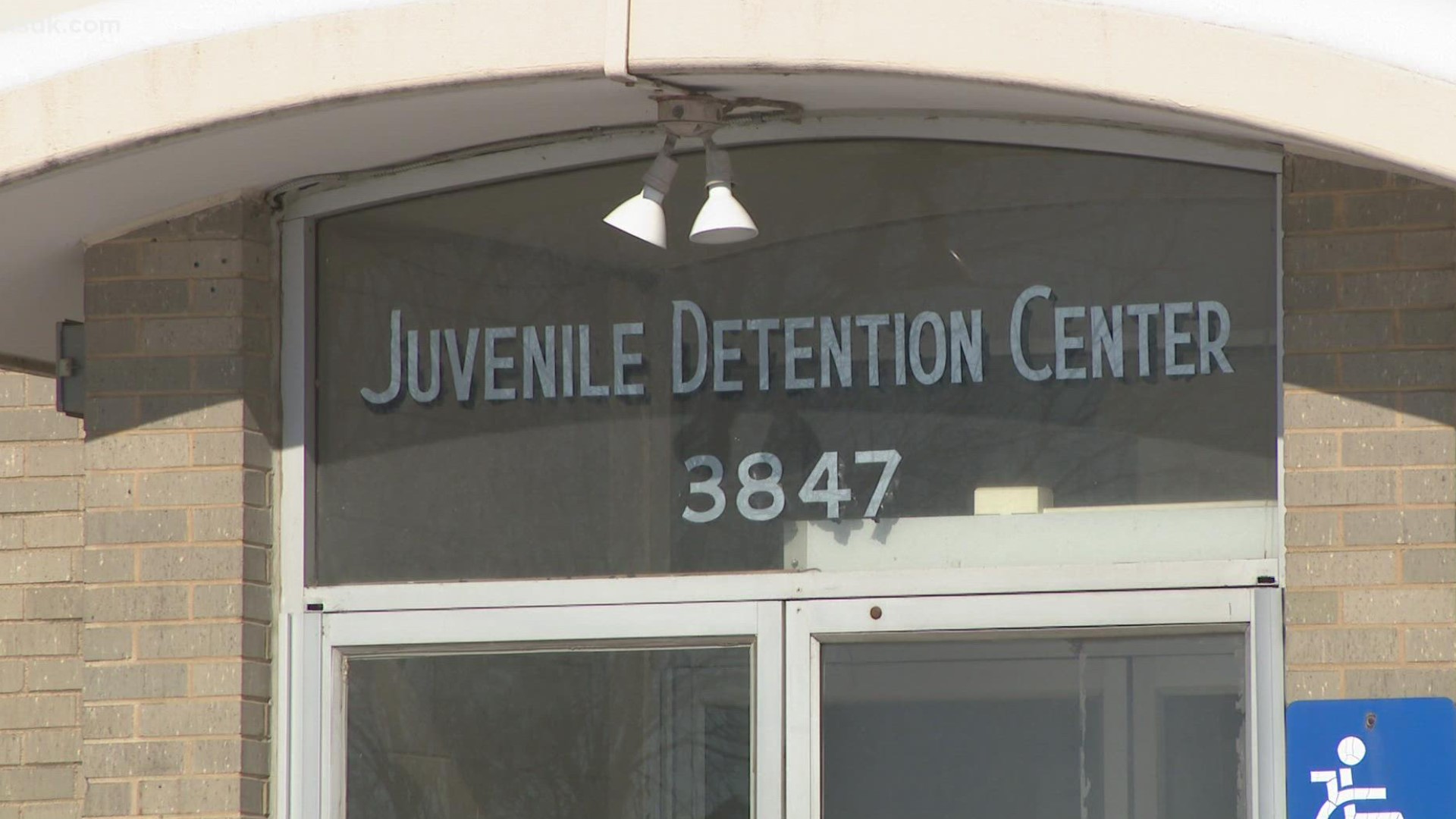ST. LOUIS — Repeated escapes. Youth workers getting assaulted. And juveniles given back to their parents after violent crimes.
All are among the headlines St. Louis’ Juvenile Justice Center has made in recent months.
Authorities who oversee the facility tell 5 On Your Side a combination of new legislation that pushed more juveniles into detention centers, turnover at the police department and courts along with short staffing have been the biggest challenges to keeping kids and the public safe.
But, change – including potential statewide reform to juvenile detention standards, higher salaries for youth leaders and better communication with police – is in the works, according to Judge Steven Ohmer, who presides over the city’s Juvenile Division of the Family Courts.
“If we were just catch and release, which some people I think would like us to do, we would have nobody here,” Ohmer said, adding that the detention population has more than quadrupled in two years. “Most of what I see are murder, assaults, robberies, those kind of offenses and some weapons and tampering kind of cases.
“You read about juvenile crime and you think, ‘Wow, it's totally out of control.’ There is juvenile crime but it's a small group that's involved.”
Ohmer has been on the bench in the city’s 22nd Judicial Circuit for 29 years – the last five of which he has spent in the Juvenile Division.
City taxpayers pay for the facility, whereas most other juvenile detention centers are funded by the state.
In January, two teens opened fire on police officers who interrupted them breaking into cars at The Foundry in downtown St. Louis.
They were released back to their parents that night.
Part of the problem was officers and juvenile authorities only spoke about the case on the phone – not in person, Ohmer said.
“I think what can happen over time is folks can get a little sloppy and start doing things a little more informal than formal,” Ohmer said.
On Thursday, the juvenile division and police department released a memo outlining intake procedures and protocols. There was nothing new within them.
“It's just making sure that everybody's on the same page and we're not operating under different ideas, so to speak,” Ohmer said.
When Ohmer first got to the juvenile division, he said there were anywhere between 10 to 15 juveniles in the detention center along Enright Avenue at any given time.
Now, there’s about 50.
He attributes the sharp increase to the Raise the Age legislation that passed in 2021.
It boosted the age of a juvenile to 17 from 16 and younger. It also required juvenile detention centers to house juveniles who have been certified to stand trial as adults for their crimes until they go to trial. Ohmer says that means the population is older and is remaining in custody longer.
“These older kids are more sophisticated and street wise,” Ohmer said. “We try to give these kids services out here too so they can move forward and benefit from the juvenile justice system.
“And a lot of the older kids just aren't interested in that. And so it creates a bad influence on the other kids. We’ve had five escapes, and then those juveniles have been picked up on other charges as well.”
It’s Amanda Sodomka’s job to keep kids detained. She’s the city’s Chief Juvenile Officer.
“The kind of security and control rules surrounding juveniles is vastly different than adults, so we've had to work creatively really,” she said. “There's no weapons.
“A lot of our approach to a situation is de-escalation. So there's a lot of training on de-escalation. We've also done security assessments with the police department and the Division of Corrections did walkthroughs and gave us some really good advice.”
Sodomka didn’t want to disclose the added security measures, but noted there hasn’t been an escape in a year. There have, however, been attempts.
“We try not to use any kind of restraints, and even if it's only physical, it’s not for a long period of time,” Sodomka said. “It's highly regulated. You can't isolate a juvenile for too long. They're still children. And a lot of them come with their own trauma. And we don't want to do anything to traumatize them in any way.”
Sodomka said each juvenile has a clinical service advocate to talk to and address any mental health issues.
“If they're released, or when they're released from our care, we hope that they're in a better spot than they were when they came to us,” Sodomka said.
Ohmer and Sodomka are also members of a statewide committee studying whether it’s time to modify juvenile detention standards.
One of those standards requires a staff-to-detainee ratio of one-to-eight.
Sodomka said the facility is able to maintain that ratio, and staffing has improved since the city raised the starting salary for youth leaders, incentivized overtime pay and allowed deputy juvenile officers to work in the detention center, not just out in the community for delinquency cases.
A year ago, the facility had 20 staffing vacancies. Now, there’s fewer than 10, Sodomka said.
Ohmer said there’s more work to be done.
“I think we're at a point where we can manage it, but we're certainly not where we want to be,” he said.

